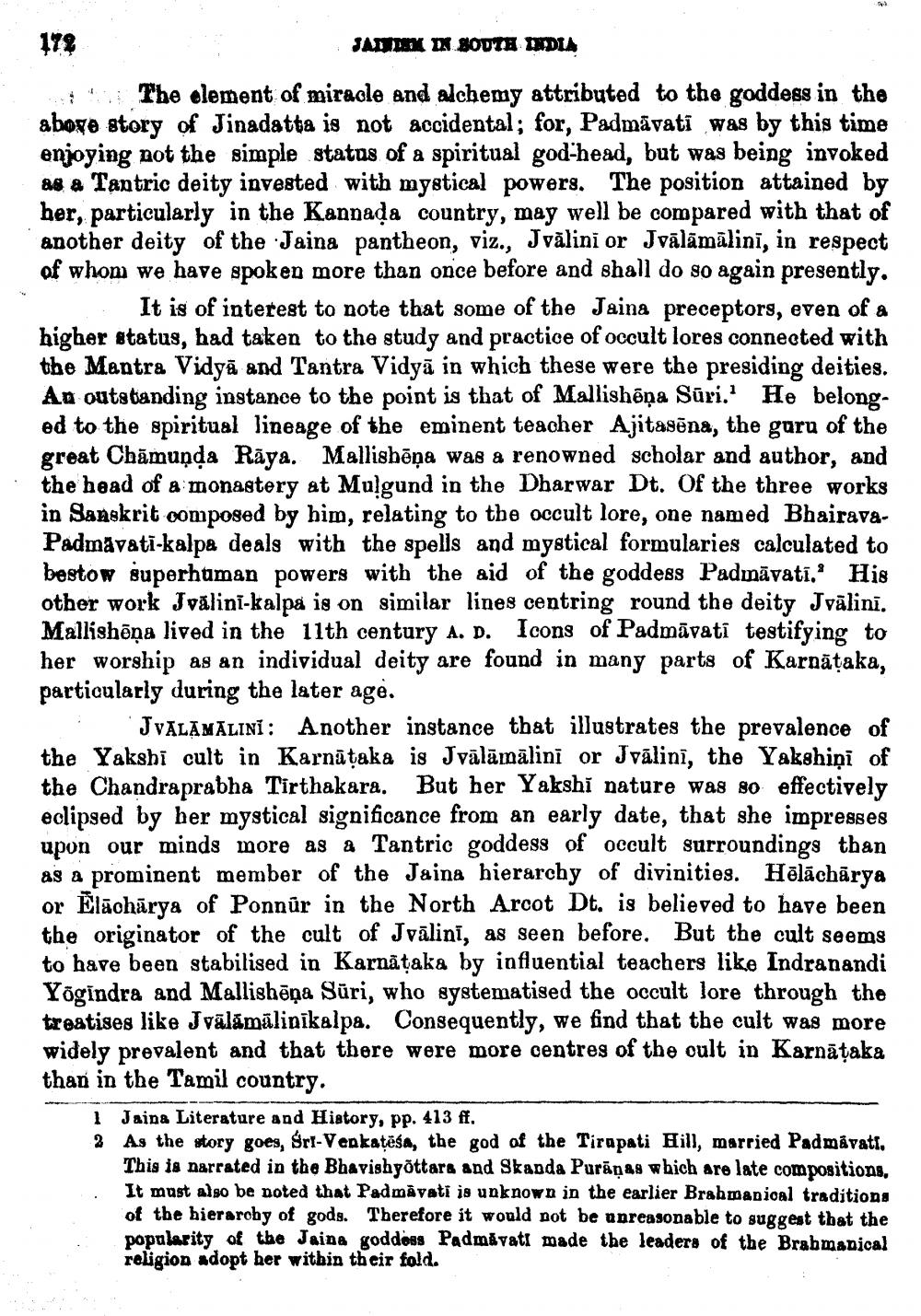________________
172
JAIWINK IN SOUTH INDIA
The element of miracle and alchemy attributed to the goddess in the above story of Jinadatta is not accidental; for, Padmavati was by this time enjoying not the simple status of a spiritual god-head, but was being invoked as a Tantric deity invested with mystical powers. The position attained by her, particularly in the Kannada country, may well be compared with that of another deity of the Jaina pantheon, viz., Jvalini or Jvālāmālinī, in respect of whom we have spoken more than once before and shall do so again presently. It is of interest to note that some of the Jaina preceptors, even of a higher status, had taken to the study and practice of occult lores connected with the Mantra Vidya and Tantra Vidya in which these were the presiding deities. An outstanding instance to the point is that of Mallishēņa Sūri.' He belonged to the spiritual lineage of the eminent teacher Ajitasēna, the guru of the great Chamuṇḍa Raya. Mallishēņa was a renowned scholar and author, and the head of a monastery at Mulgund in the Dharwar Dt. Of the three works in Sanskrit composed by him, relating to the occult lore, one named BhairavaPadmavati-kalpa deals with the spells and mystical formularies calculated to bestow superhuman powers with the aid of the goddess Padmavati.' His other work Jvälini-kalpa is on similar lines centring round the deity Jvālinī. Mallishōna lived in the 11th century A. D. Icons of Padmavati testifying to her worship as an individual deity are found in many parts of Karnāṭaka, particularly during the later age.
JVALAMALINI: Another instance that illustrates the prevalence of the Yakshi cult in Karnataka is Jvālāmālinī or Jvālinī, the Yakshini of the Chandraprabha Tirthakara. But her Yakshi nature was so effectively eclipsed by her mystical significance from an early date, that she impresses upon our minds more as a Tantric goddess of occult surroundings than as a prominent member of the Jaina hierarchy of divinities. Hēlāchārya or Elacharya of Ponnur in the North Arcot Dt. is believed to have been the originator of the cult of Jvālinī, as seen before. But the cult seems to have been stabilised in Karnataka by influential teachers like Indranandi Yōgindra and Mallishēņa Sūri, who systematised the occult lore through the treatises like Jvālāmālinīkalpa. Consequently, we find that the cult was more widely prevalent and that there were more centres of the cult in Karnataka than in the Tamil country.
1 Jaina Literature and History, pp. 413 ff.
2
As the story goes, Sri-Venkatesa, the god of the Tirupati Hill, married Padmavati, This is narrated in the Bhavishyottara and Skanda Puranas which are late compositions, It must also be noted that Padmavati is unknown in the earlier Brahmanical traditions of the hierarchy of gods. Therefore it would not be unreasonable to suggest that the popularity of the Jaina goddess Padmavati made the leaders of the Brahmanical religion adopt her within their fold.




